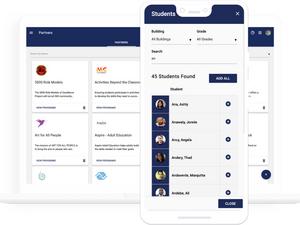
Scientists at Cincinnati Children’s Hospital have been awarded a five-year federal grant totaling $2.8 million to fund the development of a new AI-powered tool that aims to prevent violence in schools.
The funds, from the National Institute of Child Health and Human Development, will be used to develop an automated risk assessment, or ARIA, system, which is designed to detect and prevent school violence. Cincinnati Children’s announced the funding news Thursday in the hospital’s science blog.
The goal is to prevent strains of aggressive behaviors at the “earliest stage” before they escalate into more major problems like a school shooting, according to Yiizhao Ni, the project's principal investigator. Ni, who has been with Cincinnati Children’s since 2012, works in the hospital’s division of biomedical informatics.
The co-principal investigator is Dr. Drew Barzman, director of the child and adolescent forensic research program at Cincinnati Children’s.
The goal is to help establish a nationwide solution for school violence risk assessment, which will benefit health care institutions, schools and students. The study will be among the first efforts to leverage natural language processing and machine learning to analyze interviews, identify risk characteristics from student language and predict violent outcomes.
In their research, Barzman and Ni are including all spectrums of violence: verbal threats, physical aggression and bullying. They plan to recruit a total 1,000 participants, from 10- to 17-years-old.
The team is mostly recruiting from inpatient units but has recruited from schools, outpatient clinics, and the emergency department in the past.
“There hasn’t really been a short-term type of risk assessment for schools,” Barzman said. “When you add in artificial intelligence and NLP, and it’s really quite innovative, because I don’t know of any other type of violence risk assessment that uses artificial intelligence within forensic psychiatry.”
Acts of school violence have increased over the past decade, and more than 20% of students report being bullied at school, according to the Centers for Disease Control and Prevention. Violence has a far-reaching impact on the entire school population, including staff, students and families.
Barzman and Ni said using AI is like using a clinical-decision support tool. They ask participants a series of 28 questions.
While the participants answer those questions, an automated, computerized system will analyze the responses, predict risk potentials, and improve prevention by helping inform recommendations.
“When we use the AI technology, the idea is to help clinicians make more efficient and effective decisions,” Ni said. “It’s not to replace our psychiatry.”
Cincinnati Children’s is the region’s largest hospital system and second-largest employer with a workforce of 16,500. Last year, its researchers received more than $240 million in external grants.








